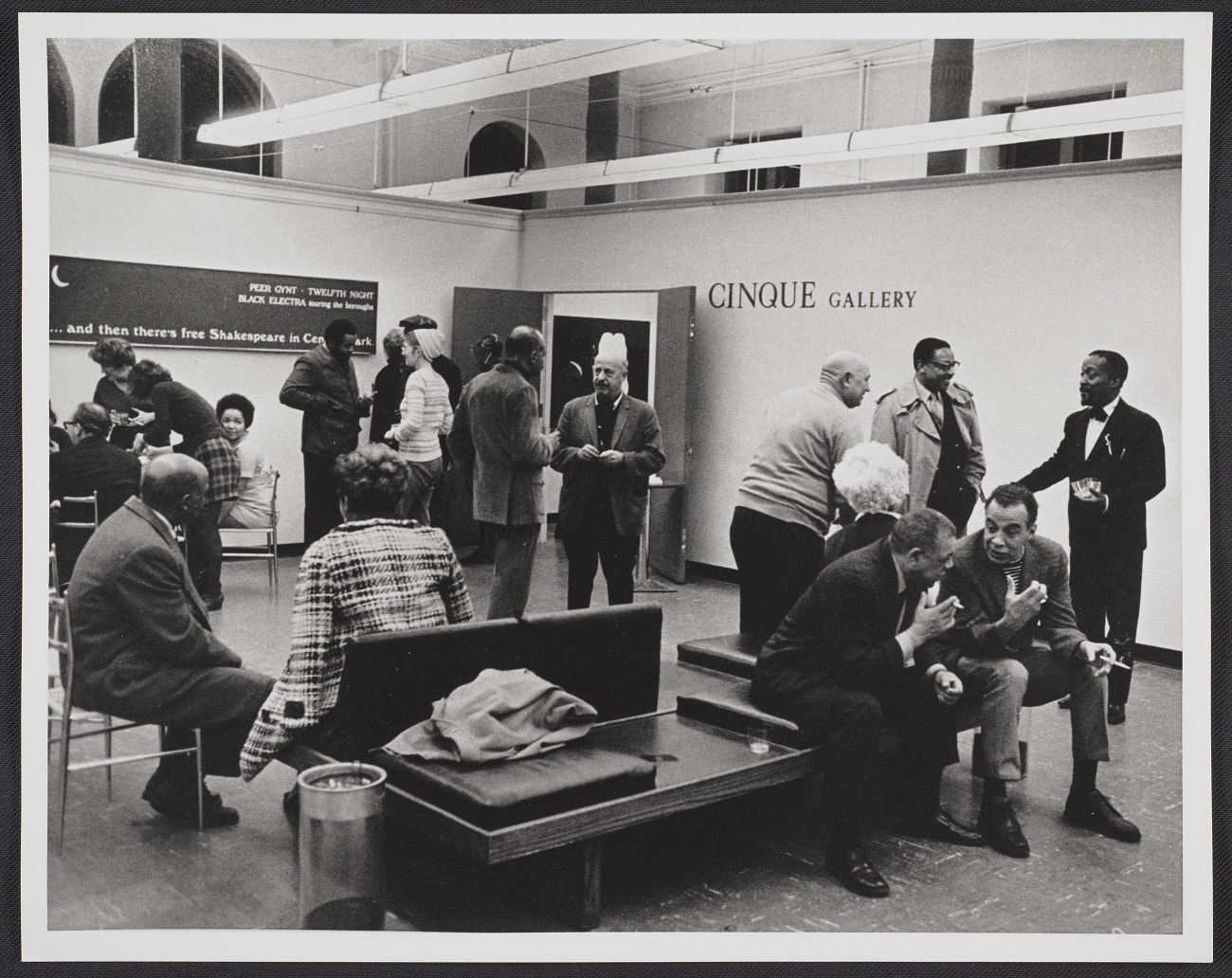How Harlem Renaissance Artists Made Their Mark in the Village

The Harlem Renaissance brought together a generation of Black artists, writers, musicians, and thinkers who transformed American culture. In the early 20th century, many Black Americans from the South sought job opportunities and greater safety and social mobility in the Midwest and North, an exodus that became known as the Great Migration. Many of them found each other in Harlem, and thus was born a revolution of Black creatives. Three of these figures were Romare Bearden (1911-1988), Norman Lewis (1909-1979), and Ernest Crichlow (1914-2005), who would go on to found trailblazing Cinque Gallery, located at various spots, including several in NoHo.
During the time of the Great Migration, in the early and mid-20th century, Greenwich Village and the East Village were also known for artistic innovation. Household names like Jackson Pollock and Willem de Kooning called these neighborhoods home. Yet almost all of the artists who achieved that level of success and recognition were white men. As striking and challenging as Pollock and de Kooning’s works were, the art world that recognized their ‘genius’ did not grant similar recognition to many artists of color or female artists. For many of these artists, they had a very narrow path, or no path at all, when it came to exhibiting and selling their work.

Artist and writer Romare Bearden decided to try to rectify this inequity. He and fellow artists Norman Lewis and Ernest Crichlow co-founded Cinque Gallery in 1969 in a space provided by the New York Public Theatre. They named their new gallery in honor of Joseph Cinque, a man who led a revolt against a slave ship in 1839. Cinque Gallery exhibited works by African American artists whose work had rarely been seen and was new to ‘mainstream’ art audiences.
While Lewis and Crichlow were native New Yorkers, Bearden was originally from North Carolina. He experienced the Great Migration firsthand when he moved with his family to Harlem as a child. Throughout his life he championed unity and support within African American communities, a subject that is at the forefront of both his art and his philanthropic projects. He is best known for his collages depicting everyday scenes of Black life in America, particularly in the South, from which his family came. In addition to being a working artist, Bearden was also a social worker in Harlem. After publishing several successful books, he started the Bearden Foundation to support emerging artists.

Norman Lewis was born and raised in Harlem, where he began painting and studying art independently. As a young man he trained with renowned artist Augusta Savage at the Savage School of Arts and Crafts in Harlem. Savage would later exhibit her work at Cinque Gallery. Lewis is one of a small number of Black artists whose work is considered within the Abstract Expressionist genre. He employed abstraction to invoke very concrete, everyday threats of violence against Black Americans. His most famous paintings recall Klu Klux Klan members in their hoods.

Ernest Crichlow was a Brooklyn native who also studied under Augusta Savage. He was interested in storytelling through his work, and became known as a talented painter in the social realist movement. His paintings are often colorful, moving, and introspective, showing quiet scenes of African American life as well as the sorrow and isolation caused by segregation. In 1980 he was honored by then-president Jimmy Carter.
Cinque Gallery garnered membership from some of the foremost Black artists of the 20th century, including Jacob Lawrence, Selma Burke, Sam Gilliam, and the aforementioned Augusta Savage. In addition to the Public Theatre, the gallery had other homes in NoHo, including 2 Astor Place and 442 Lafayette Street. Cinque gallery closed in 2004 at its fourth and final location, 560 Broadway in Soho. The Romare Bearden Foundation continues to support working artists through the Cinque Artists Program.
To learn more about artists in Greenwich Village, the East Village, and Noho, check out the Artists Tour on our South of Union Square Map.
